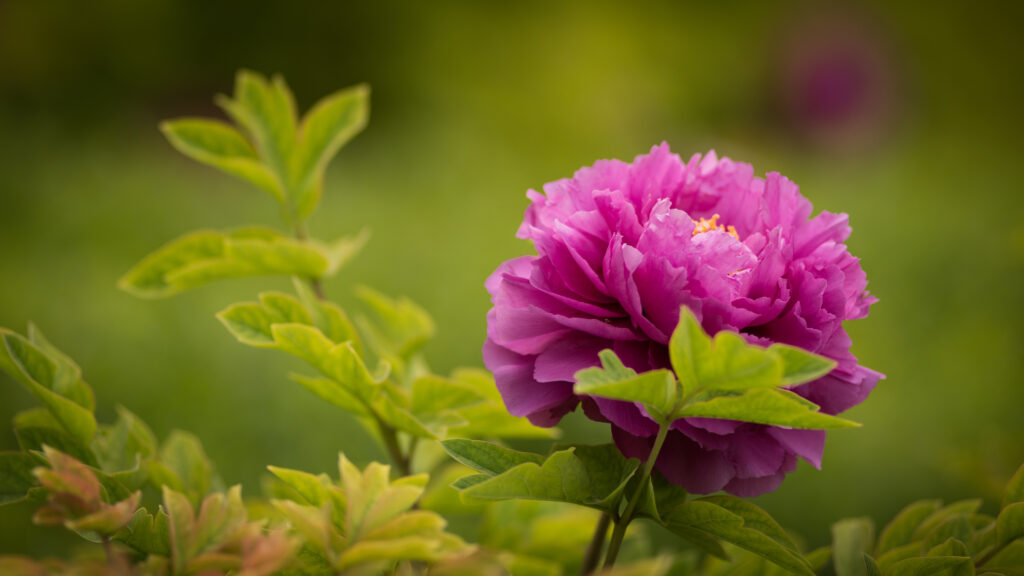(1) Long life span paeoniarockii is a long-lived tree species. In its life process, from seed germination to gradual aging, it undergoes a series of staged age changes. In the first three years, the seedlings grow slowly, mainly root growth, and the height of the aboveground part is less than 15 cm. After the fourth year, the growth accelerates, and the plant height can reach 40-60 cm in the fifth year. Some individuals begin to bloom after 4 years. The adult stage is strong and blooms luxuriantly, which is the best viewing period. This stage lasts about 60-100 years or longer depending on management conditions, and then enters the old age stage, the growth declines, and needs to be renewed and rejuvenated.
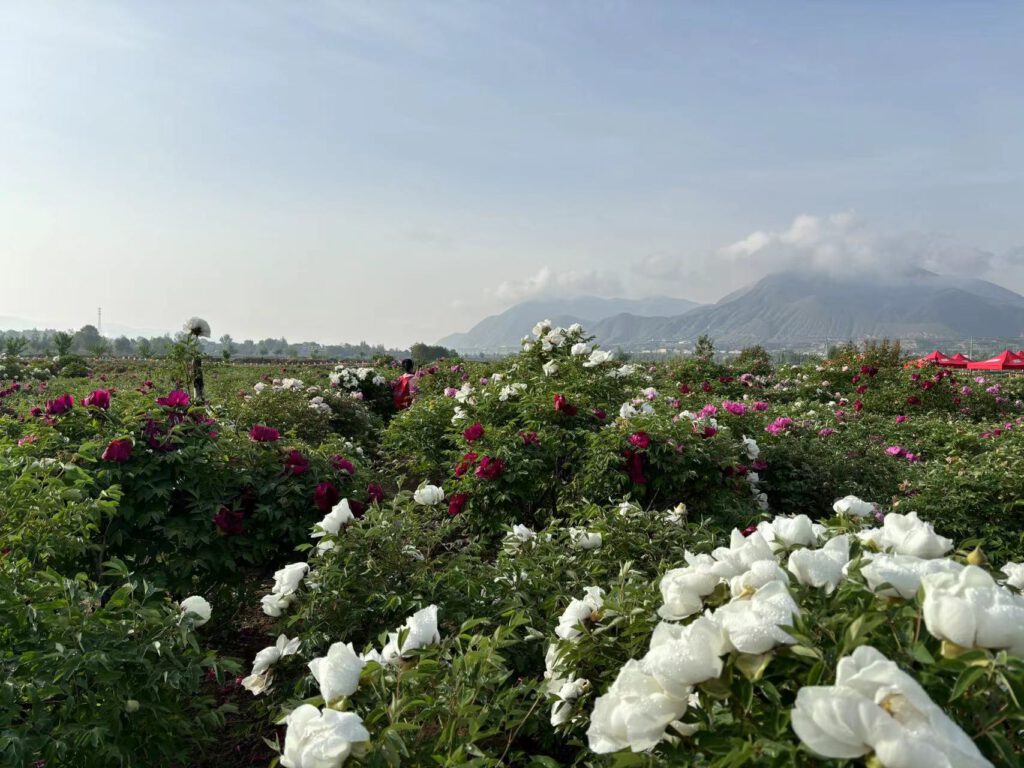
In the annual cycle, the paeoniarockii also shows the characteristics of spring branching, summer nap, autumn rooting, and winter dormancy. Due to climatic conditions, its annual growth period is significantly shorter than that of the Central Plains peony. In Gansu, it generally sprouts from late March to early April, blooms from late April to early June, leaves wither from mid-October to early November, and then enters a dormant period.
(2) Tall plants, strong growth potential, and strong resistance
The paeoniarockii plant is tall and has strong growth potential. After the flower buds (mixed buds) on the adult plants germinate, the branches and leaves grow in coordination to ensure the normal development and flowering of the flower buds. The leaves are initially small and curled, and only unfold and rapidly increase when the flower buds enter the wind chime period, reaching the best state after the flowering ends. Before flowering, the leaves mainly grow and develop on their own, often competing with the flower buds for nutrients and growth regulators. After the flowering period, the leaves grow fully, and their photosynthetic products become the main nutrient source for various growth and development processes of the plant.
Before flowering, paeoniarockii branches are in primary growth, that is, elongation growth is the main growth, and after flowering, they are in secondary growth, that is, thickening growth and lignification are the main growth. The growth of new branches of most varieties is better than that of the Central Plains peony, reaching 40~50cm. Because the upper part of the branch without buds dies in winter, its actual length is only about 1/3 of the annual growth.
(3) Short and concentrated flowering period, low degree of variety evolution
After the flower buds sprout, it takes about 50 to 60 days from the appearance of the buds to the flowering. The early and late flowering period is closely related to the spring temperature of the year. Warm or cold spring can advance or delay the flowering period by 7 days or more. The temperature during the flowering period has a more direct impact on the length of the flowering period. High temperature weather can greatly shorten the flowering period. Since changes in altitude affect environmental factors such as temperature, light and humidity, they have a significant impact on the flowering period of peonies. Generally, the flowering period is delayed with increasing altitude. In Lanzhou, Gansu, the peak flowering period in the urban area (1550m) is at the end of April and the beginning of May, the Heping Peony Garden (1750m) in the suburbs is in mid-May, and the Gaolan Mountain (2100m) on the south side is in late May.
The Northwest peony has a short and concentrated flowering period like the Central Plains peony. The group flowering period is generally about 20 days. Its variety evolution is low, and there are few varieties, generally less than 5%.
(4) Well-developed root system
The seedlings of Paeonia purpurogena have obvious taproots, which are typical taproot systems. However, adult plants have large fleshy root systems, and the taproots are no longer obvious. Most of the fleshy roots are 50-80cm long, and a few can reach more than 1m. In loess mountains, they can sometimes reach several meters deep. Vegetative propagation seedlings reestablish a complete root system after 2-3 years, and there is no obvious taproot.
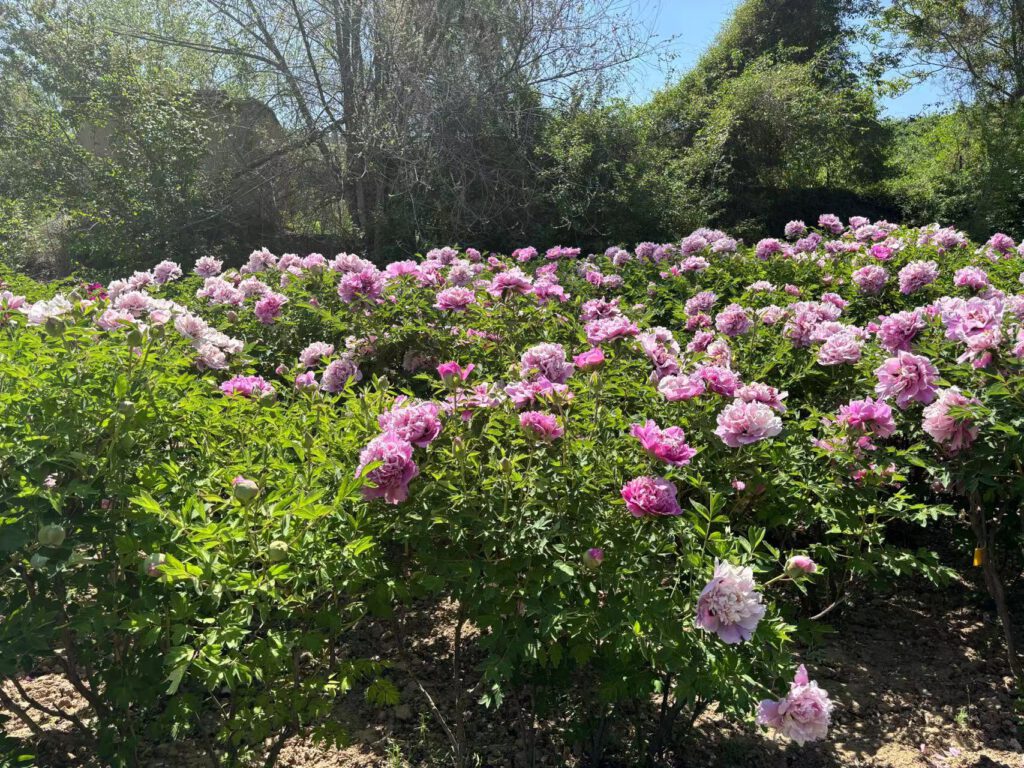
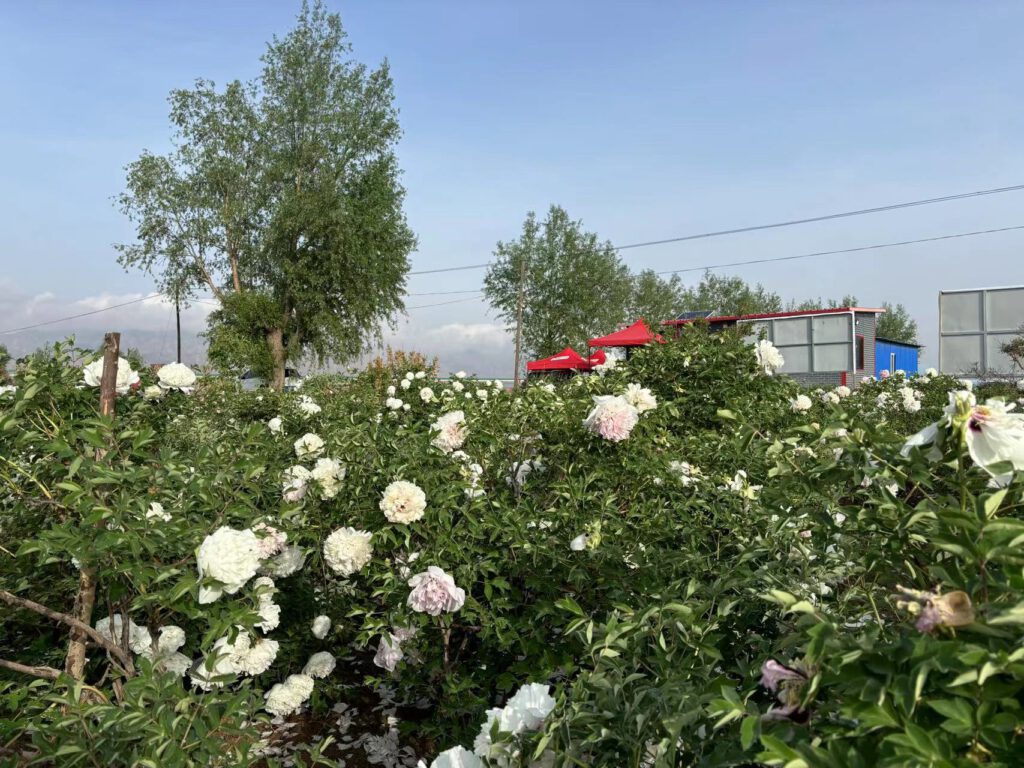
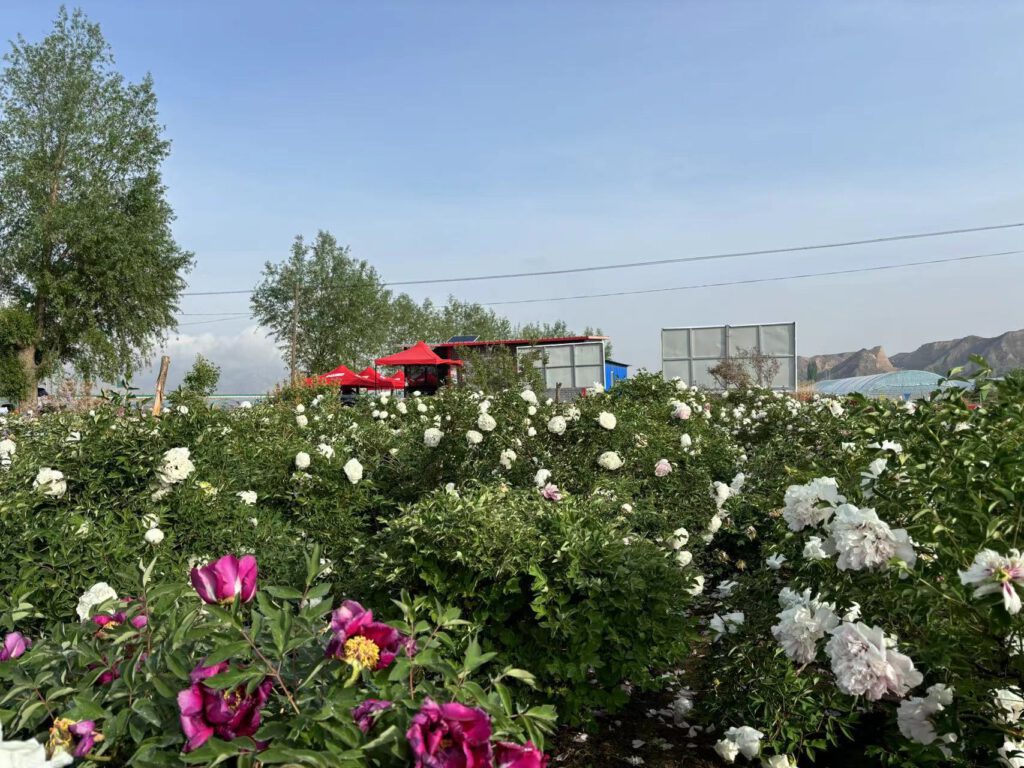
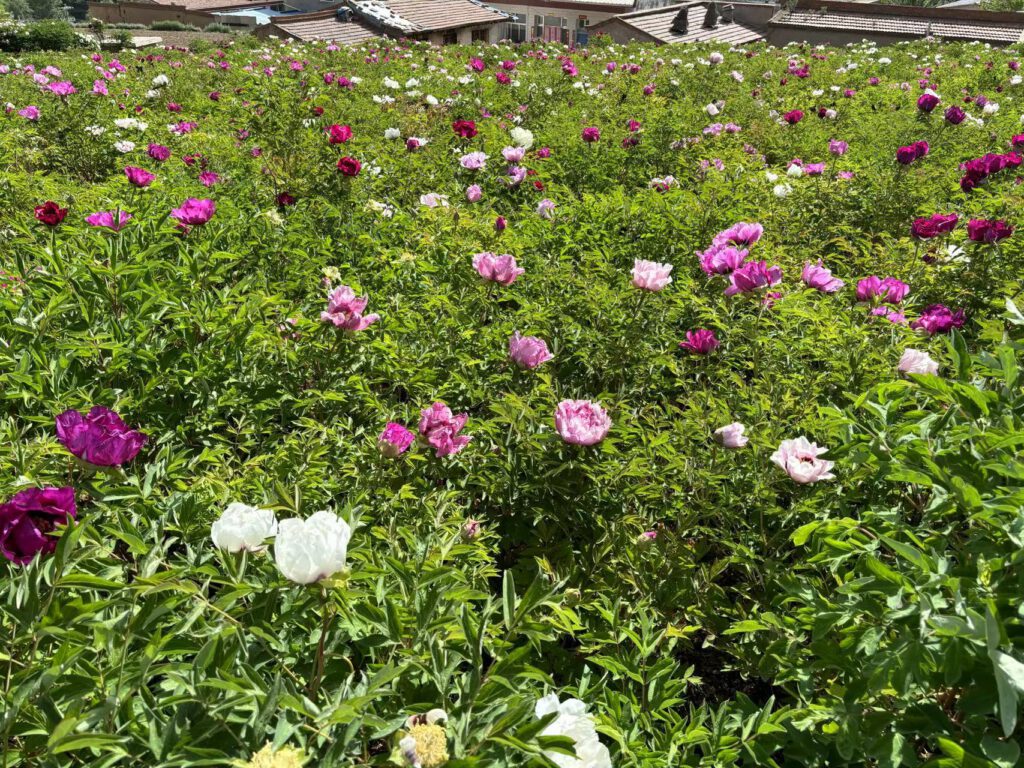
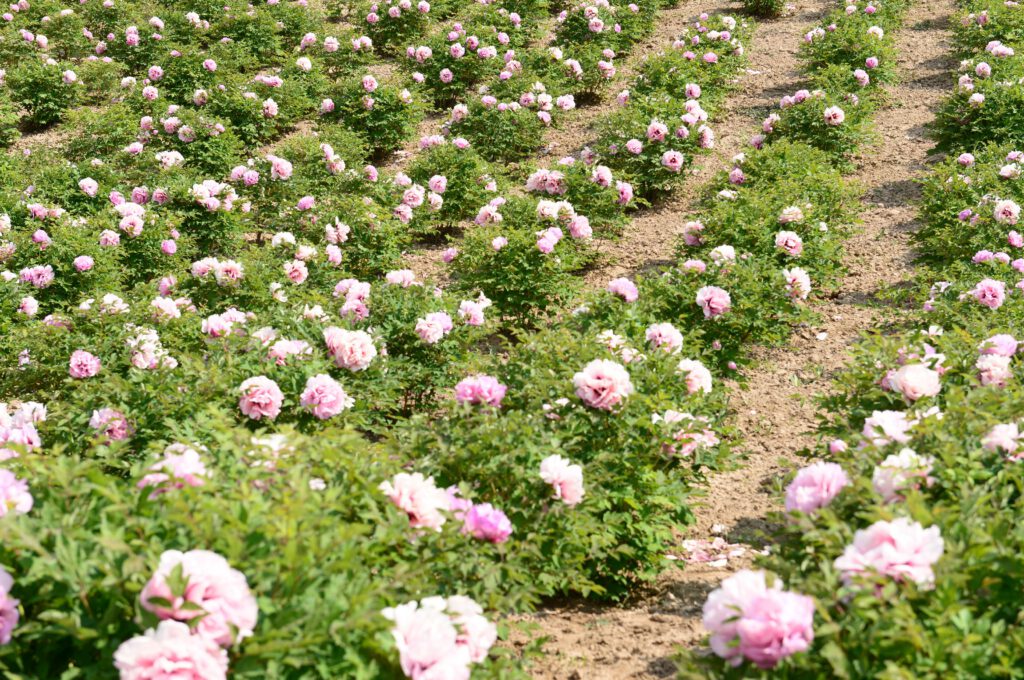












.jpg)
